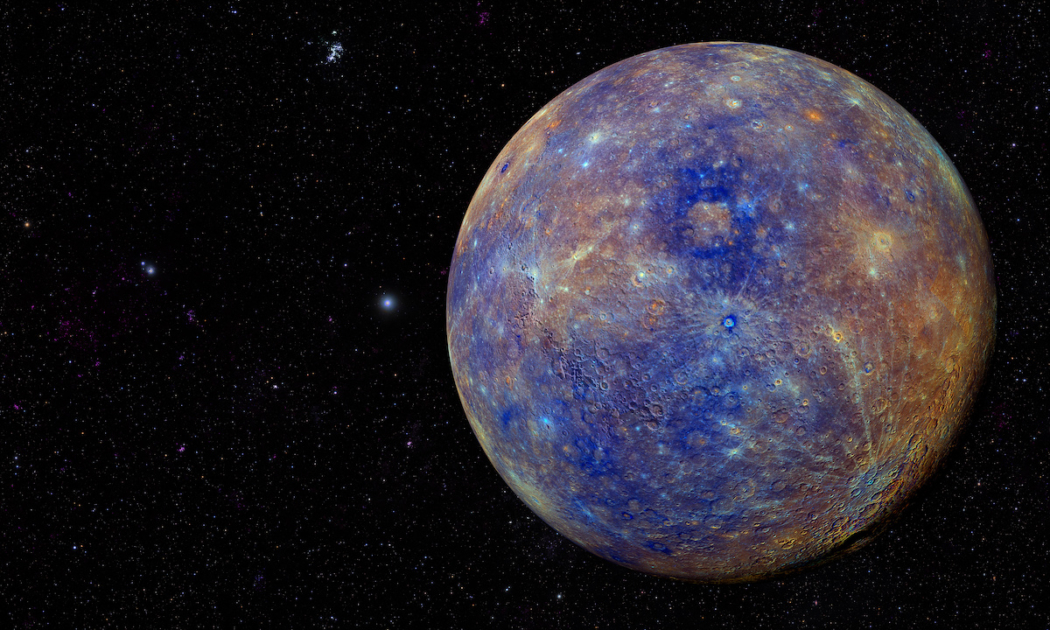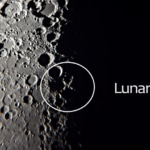Mesmerizing Mercury
10 fascinating facts about the first planet in our Solar System.

Mercury is the closest planet to the Sun in our Solar System. Because it is so close to the Sun, it is only observable in the early morning, just after sunrise, or at dusk. In fact, ancient Greek astronomers once believed Mercury was actually two separate objects: one visible only at sunrise, and the other visible only at sunset. Here are some more interesting facts about “the swift planet” that you might not have learned in school:
– With diameter of 3,032 miles, Mercury is the smallest planet in our Solar System. It is actually smaller — though more massive, thanks to its heavy iron core — than Ganymede, Jupiter’s largest moon, or Titan, Saturn’s largest moon. From 1930 until 2006, when Pluto was downgraded to a dwarf planet, Mercury was considered the second smallest planet.
– Mercury orbits the Sun once every 88 Earth days. It rotates on its axis once every 59 Earth days and has the least dramatic axis tilt in our solar system.
– The length of a solar day — the time between when the sun is highest in the sky on one day until it is highest in the sky in the next day — on Mercury does not match length of its rotation. Though it rotates on its axis once every 59 Earth days, a “day” on Mercury lasts for 176 Earth days. That’s because, during a single rotation of the planet, the Sun can rise partway, reverse, set, and rise again.

– Mercury’s orbit is the most eccentric in our Solar System, which means it has the least resemblance to a perfect circle. Its orbit actually varies in shape over time, due to gravitational interaction with other planets. Scientists speculate that the gravitational pull from Jupiter could cause Mercury to collide with Venus within the next 5 billion years.
– Mercury is a terrestrial planet, meaning it has a hard, rocky surface rather than made up of gasses. It is one of four terrestrial planets in our Solar System, along with Venus, Earth, and Mars. Its surface is similar to our own Moon, with many craters.
– Mercury has no permanent atmosphere. It is too small, and has too weak of a gravitational pull, to create one. It does have a layer of free-flying molecules above its surface, including hydrogen, helium, oxygen, sodium, calcium, and potassium, among others. This unstable layer is known as an exosphere. (Earth has an exosphere, too, above its atmosphere).
– The average surface temperature on Mercury is 337° F. Because it has no atmosphere, though, its temperature fluctuates much more drastically than the temperature on Earth, ranging from -280° F to 800° F.
– The planet was named for the Roman god Mercury, patron of trade and commerce, and messenger to the other gods. Mercury was commonly associated with speed and cunning, making it an apt name for the planet with the fastest orbit in the Solar System.

– Mercury has no moons, though the discovery of excess ultraviolet radiation near the planet by the Mariner 10 space probe in 1974 led astronomers to briefly speculate one might exist. They later discovered that the radiation had come from the star 31 Crateris.
– Because the Sun is so close to Mercury, its gravitational pull causes the planet to experience “tides.” Bulges are raised in its hard surface, similar to the interaction between the Moon and Earth’s oceans. Mercury’s solar tides are about 17 times stronger than the Earth’s lunar tides.

Jaime McLeod
Jaime McLeod is a longtime journalist who has written for a wide variety of newspapers, magazines, and websites, including MTV.com. She enjoys the outdoors, growing and eating organic food, and is interested in all aspects of natural wellness.






This is super interesting I marveled it.